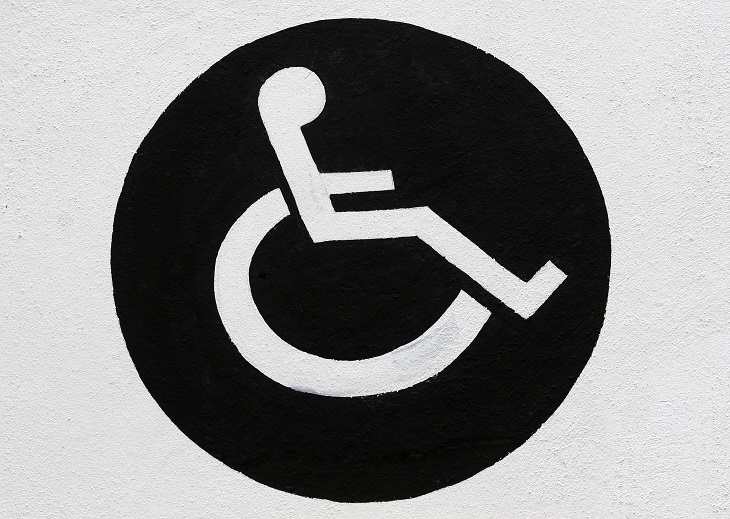The History Of Disabled Parking In America

The first ever handicap parking law was enacted in plucky little Delaware in 1955. But this lonely (and impressively pioneering) piece of legislation was a distinct outlier, and nothing like it existed anywhere else in the country at that time. The history of disabled parking in America really begins in the “swinging 60s.”
The 1960s was an era when many discriminated-against groups in American society began to finally see an improvement in their situation. For most of American history, women, ethnic minorities, homosexual people, and disabled people had all been seen and treated as second-class citizens. But in the 1960s this began to change.
Accompanied by musical geniuses such as Jimi Hendrix, Bob Dylan, and The Beatles, the Civil Rights Movement grew to fever pitch in the 1960s, creating a cacophony that people in power could not manage to ignore. Millions of American citizens, of all colors, creeds, sexes, and sexual orientations, demanded equality for all. People marched, chanted, and protested for fairness. It was a wonderful time, and a great deal of societal change was achieved.
Although none of the legislation that stemmed from the 1960s Civil Rights Movement explicitly mentioned disabled people as a distinct group, it certainly cemented the desire and intention to prevent discrimination and create equal opportunity for all. By the late 1960s, the idea of equal rights for all people was firmly at the forefront of society’s mind, and a value that the great majority of citizens strongly believed in.

It was at this time that programs began to be implemented, initially at state and local levels, dealing with disabled parking in America. These initial programs were modest and limited. They provided only a very small amount of handicap parking spaces that were only allowed to be used by severely disabled people. Florida was an early implementer of a disabled parking program, but it provided a mere one space at each state building and one space for every 150 regular metered on-street spaces. These spaces were only allowed to be utilized by people who used a wheelchair and who had been certified permanently and completely disabled by two licensed Florida doctors.
The federal government began making moves to improve the situation of disabled people in 1968 with the Architectural Barriers Act. Under the act, all federal agencies were required, as much as was reasonably possible, to ensure that physically disabled people had access to federal facilities. The government mandated parking spaces, signage, and curb cuts, and introduced the universal access symbol.
The Architectural Barriers Act was a step in the right direction, but it was still greatly limited by the fact that it only applied to federal facilities. The Rehabilitation Act of 1973 extended the reach of federal regulations beyond federal facilities to any and all federally funded facilities. This was a big improvement. The act stated that “no otherwise qualified individual with a disability in the United States shall, solely by reason of her or his disability, be excluded from participation in, be denied the benefits of, or be subjected to discrimination under any program or activity receiving Federal financial assistance.” This meant that any program receiving government money had to provide easy access for disabled people.
In 1988 the Fair Housing Act was amended. The amendment made it illegal to “discriminate in the sale or rental, or otherwise make unavailable or deny, a dwelling to any buyer or renter because of a handicap.” This effectively required landlords to provide disabled access to their properties.

The federal government act that most profoundly impacted disabled parking permit holders in America was the Americans With Disabilities Act of 1990. This thorough and far-reaching piece of legislation had been fought and campaigned for long and hard by disability rights activists. The campaign culminated in the dramatic and awe-inspiring “Capitol Crawl,” where disabled activists jettisoned their wheelchairs and crutches and dragged themselves up the steps of the United States Capitol building in order to highlight their daily struggle to the nation. Images of this iconic protest went viral and won the activists widespread public support, and the Americans With Disabilities Act was passed in July of 1990.
Included in the Americans With Disabilities Act is the legal basis for the creation and maintenance of handicap parking spaces as we know them today. Section 4.6 of the ADA, entitled “Parking and Passenger Loading Zones,” is the most comprehensive piece of legislation ever written that deals specifically with handicap parking regulations.
The fight for fair U.S. disabled parking has been long and hard, and there have been many twists and turns in the tale. Prior to the 1960s, disabled parking was non-existent, but as the decades passed and activists bravely fought and won more and more battles, the landscape changed for the better. We now have a situation where handicap parking permits are relatively easy to acquire for people who need them, and spaces are widespread. It’s been quite a journey, but we’ve made it!